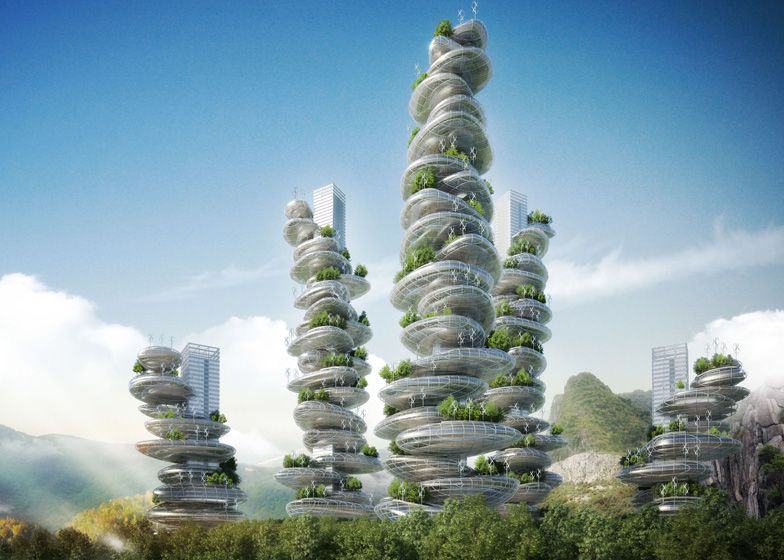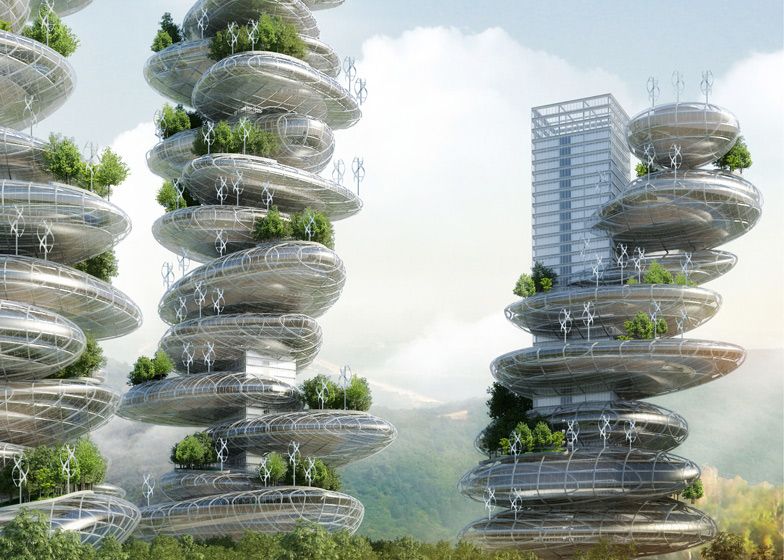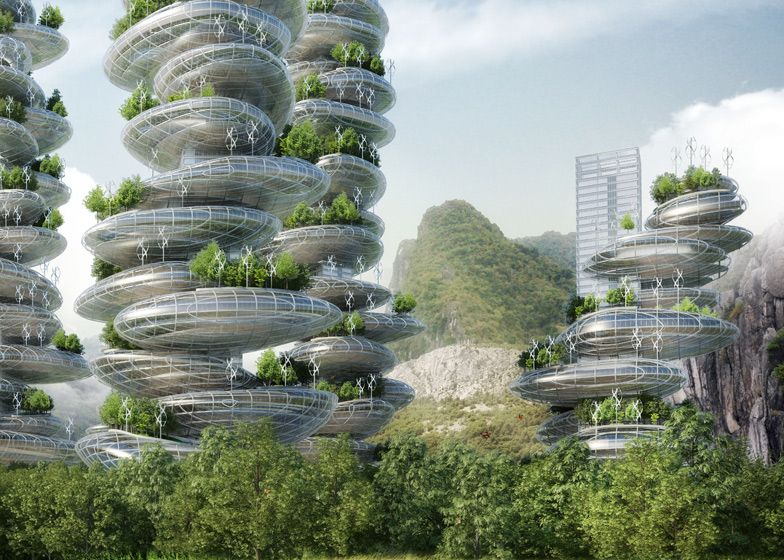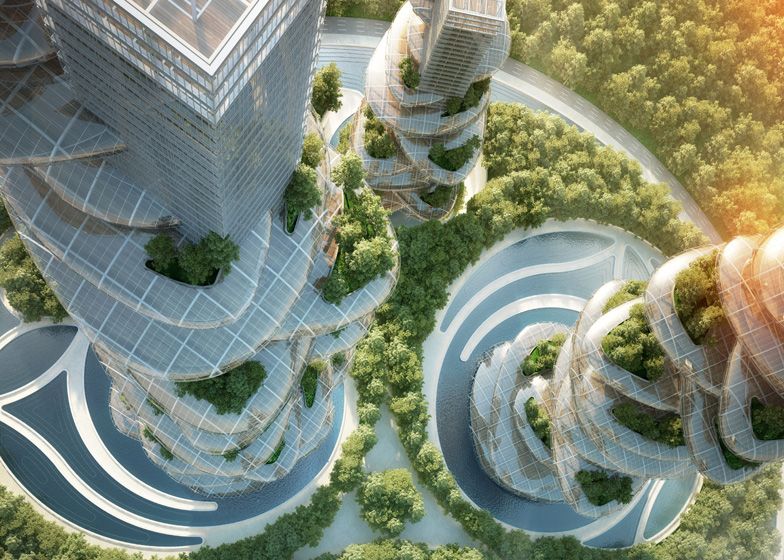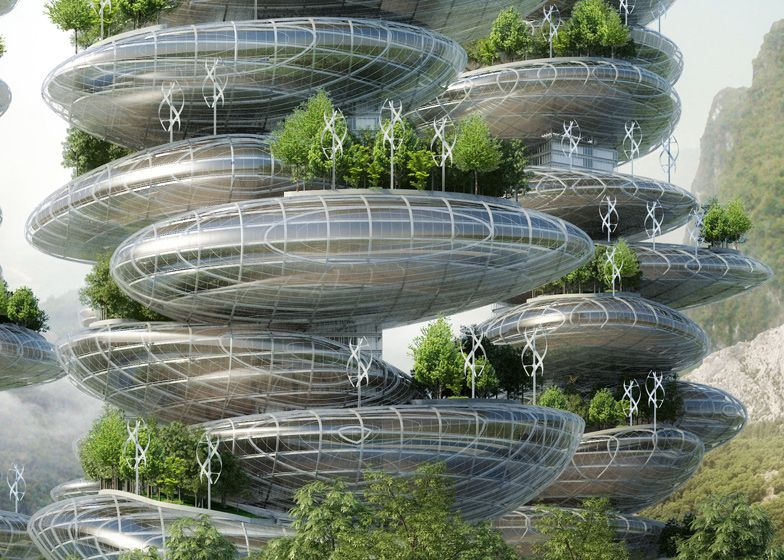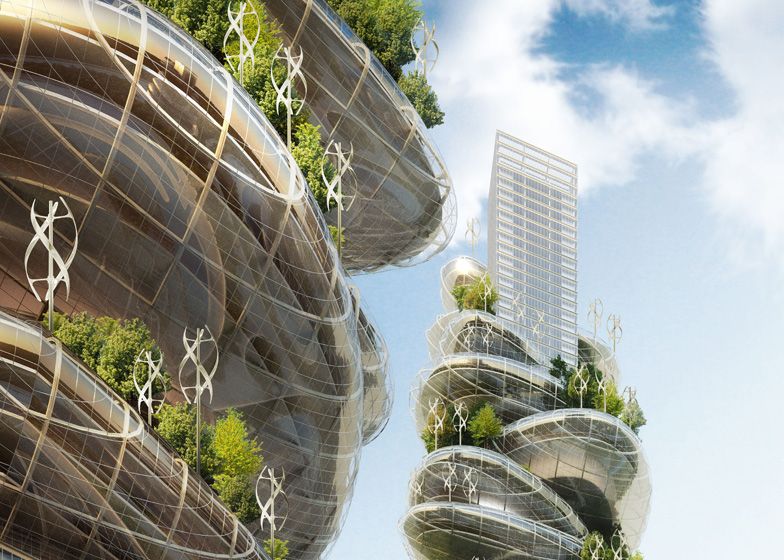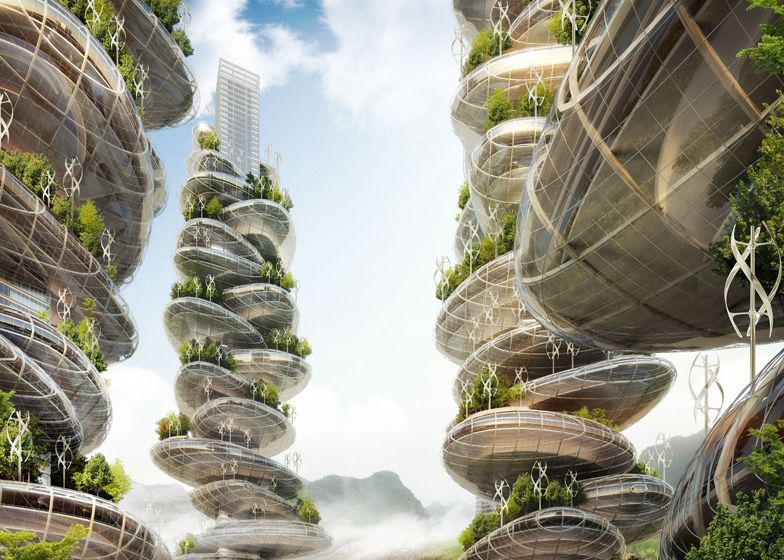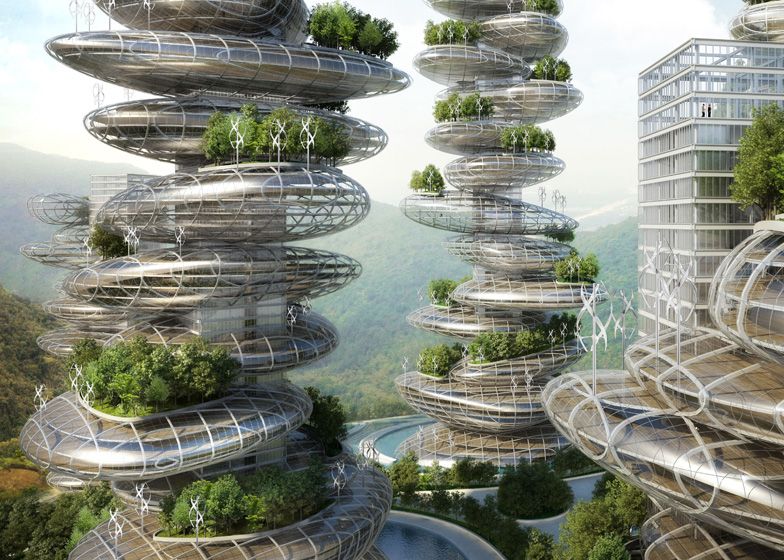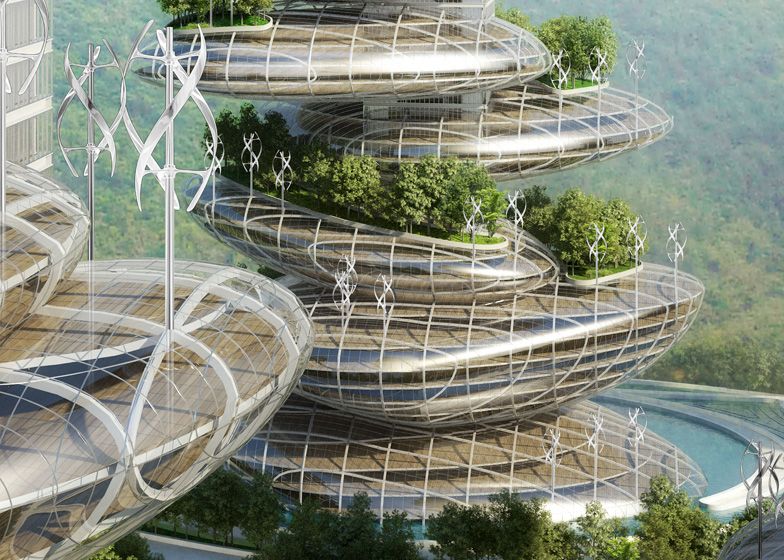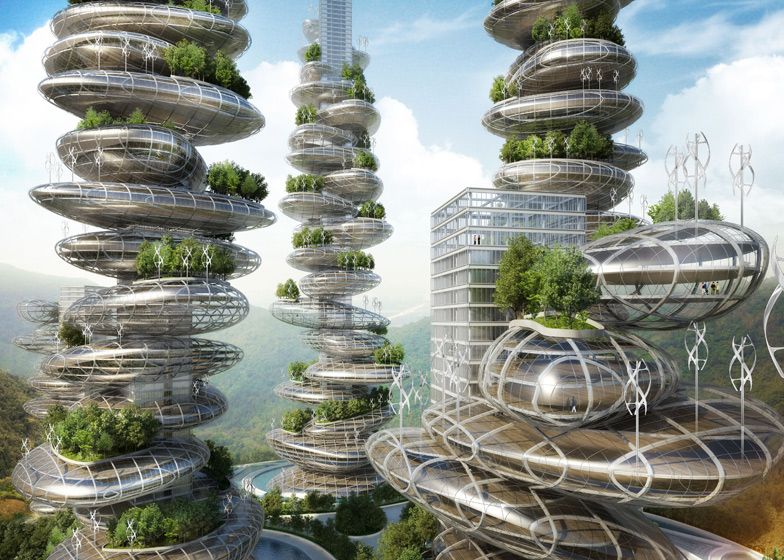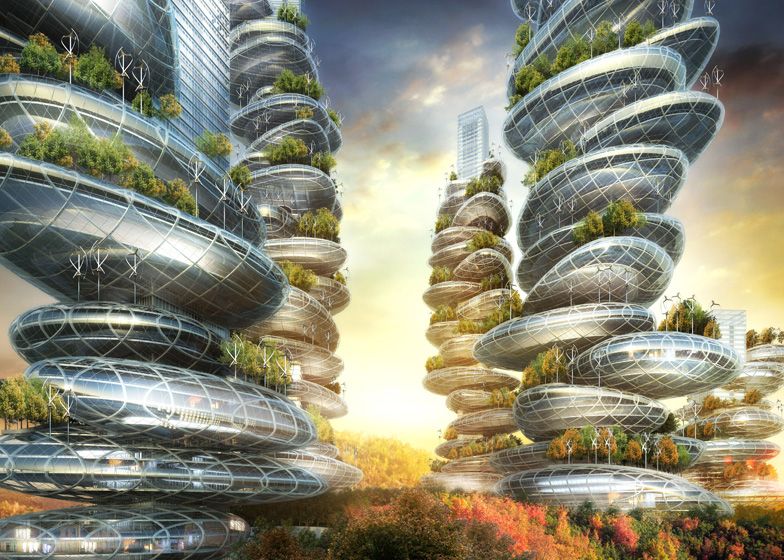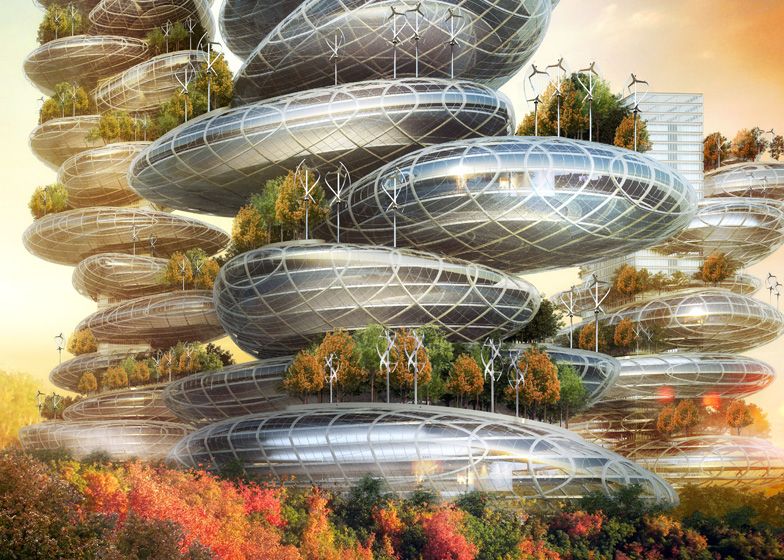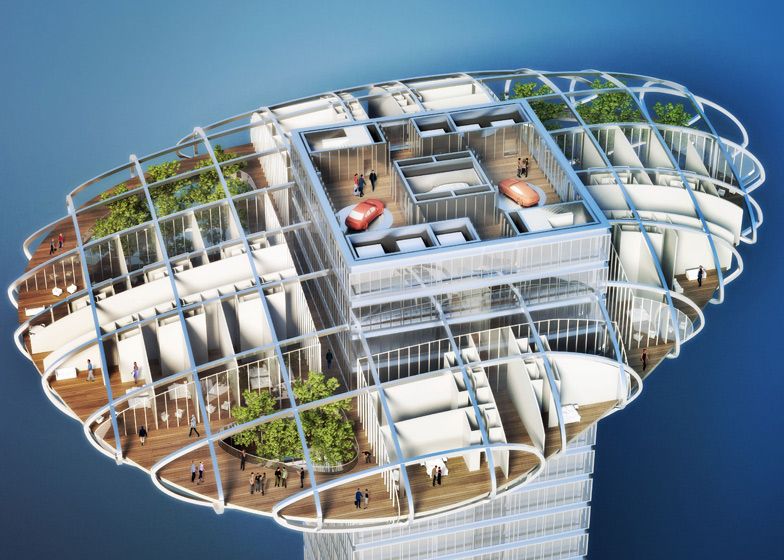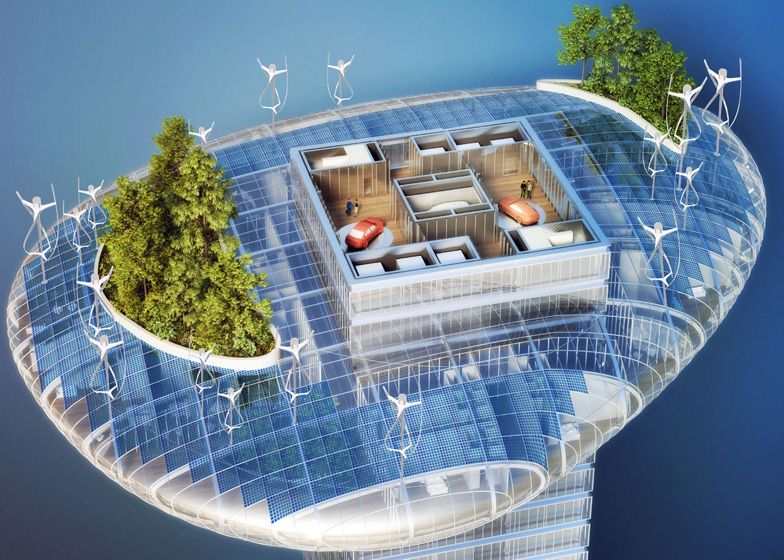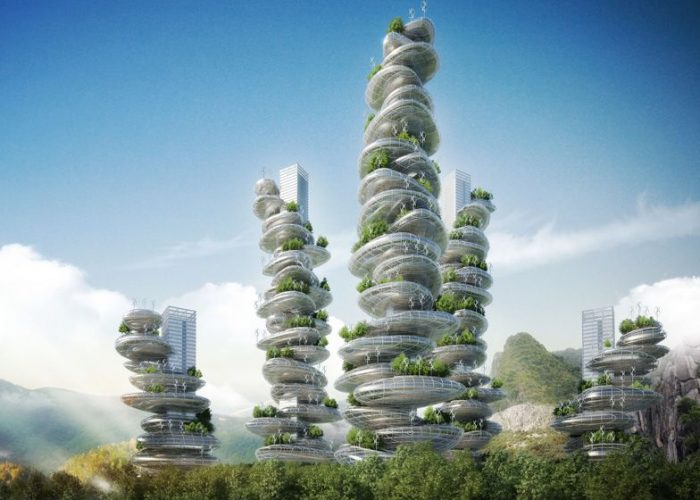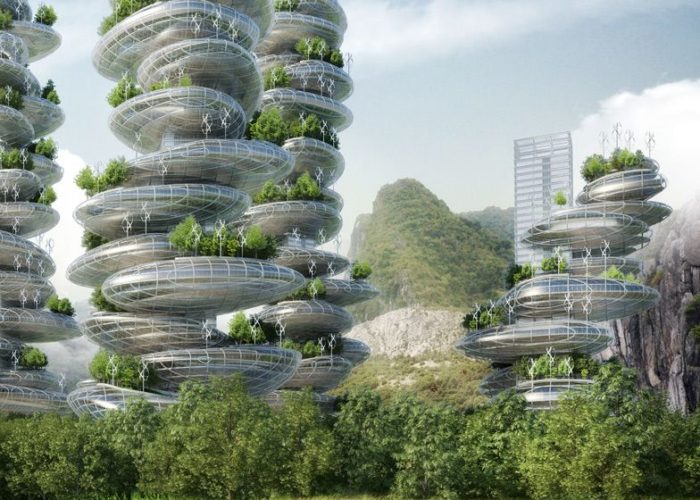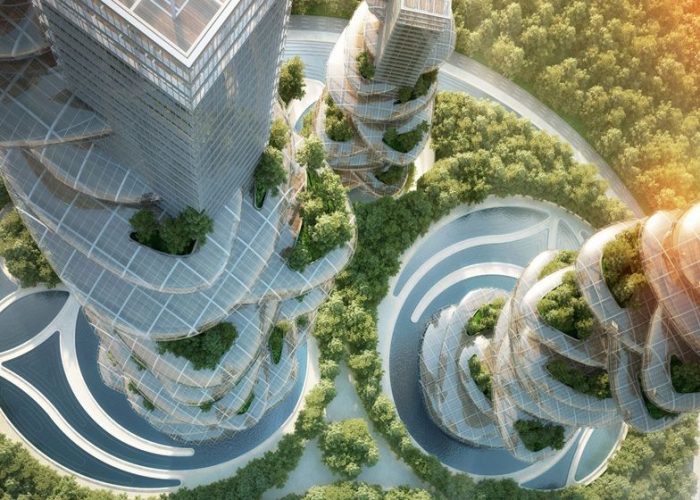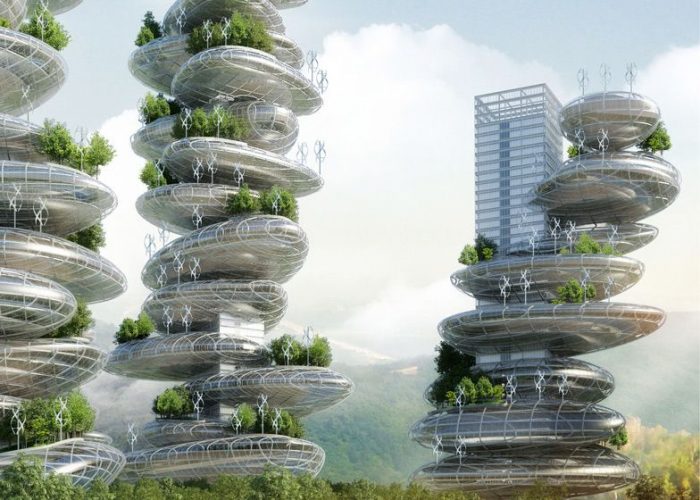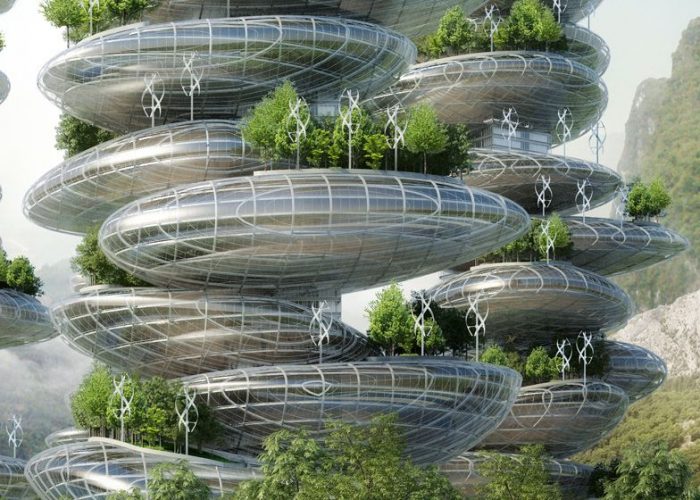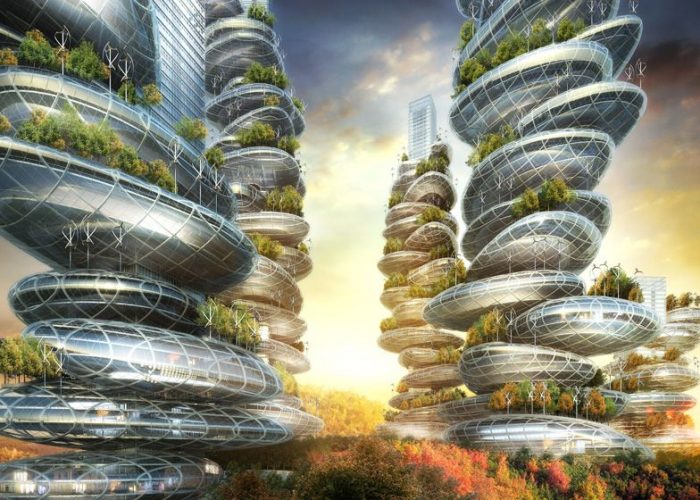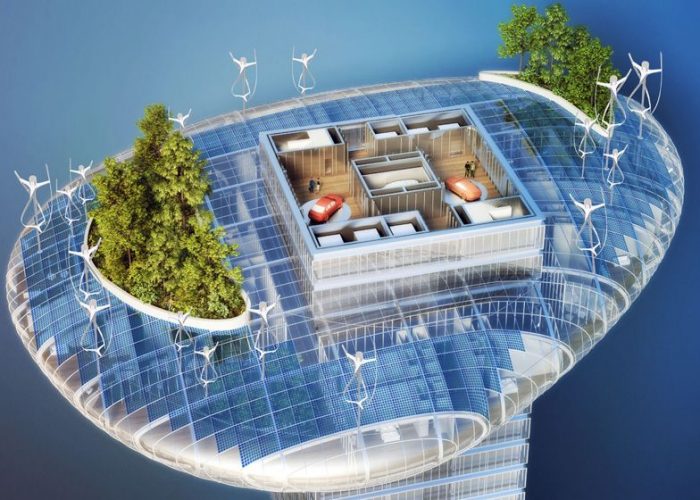Asian Cairns Vincent Callebaut Architectures
At the end of 2011 in China, the number of inhabitants in the cities exceeded the number of inhabitants in the countryside. Whereas 30 years ago only one Chinese person out of five lived in the city, the city-dwellers represent now 51.27% of the total population of 1 347 billion of people. This urban population is supposed to increase to 800 million of inhabitants within 2020 spread mainly in 221 cities of at least one million of inhabitants (versus only 40 in Europe of the same scale) and 23 megapolis of more that five million of inhabitants.
According to Li Jianmin, an expert in demography from the Tianjin University, the Chinese population will be urban at 75% within 2030 ! Facing this massive rural exodus and the unrestrained acceleration of the urbanisation, the future models of the – green, dense and connected – cities must be rethought from now on ! The challenge is to create a fertile urbanisation with zero carbon emission and with positive energy, this means producing more energy that it consumes, in order to conciliate the economical development with the protection of the planet. The standard of living of everyone will thus be increased by respecting at the same time the standard of living of everybody.
The green city
The cities are currently responsible for 75% of the worldwide consumption of energy and they reject 80% of worldwide emissions of CO2. The contemporary urban model is thus ultra-energy consuming and works on the importation of wealth and natural resources on the one hand, and on the exportation of the pollution and waste on the other hand. This loop of energetic flows can be avoided by repatriating the countryside and the farming production modes in the heart of the city by the creation of green lungs, farm scrapers in vertical storeys and by the implantation of wind and solar power stations. The production sites of food and energy resources will be thus reintegrated in the heart of the consumption sites ! The buildings with positive energies must become the norm and reduce the carbon print on the mid term.
The dense city
The model of main contemporary cities advocating the urban spread and based on the mono-functionality and the social segregation, must be rejected ! Actually, the more a city is dense, the less it consumes energy.
This is the end of ultra secured ghettos of rich people against quarters of huge poverty ! This is the end of bedroom suburbs without any activity alternating with uniform commercial area and without any inhabitant ! This is the end of museum city centres fighting against monofunctional business districts. This is the end of embolism of the all-car eating away the city centres ! This is the end of the explosion of public and private transports devouring our lands because based on an obsolete geographical separation of housing and work!
The social diversity and the functional diversity must be the key words to build more intelligent cities! Ecologically more viable, the dense, vertical and less spread city will constitute an attractive open pole and offering many services. The social will be reinvented !
The connected city
The information and communication technologies have now a major role in the development of city network and will be able to reduce the carbon emissions from 15 and 20% within 2020. The communication solutions such as the optic fiber and the satellite systems enable already thanks to their associated applications (video conference, telecommuting, tele medicine, video surveillance, e-commerce, real time information, etc.). to reduce considerably the carbon emissions and to save the travel costs by reinforcing at the same time the economical dynamism and the attractiveness of the cities.
Based on innovation, the TIC solutions favour the diminution of physical goods and means of transport via the dematerialization. They empower also a clever logistics and a synchronisation of the production operations. Everything tends to new opportunities of profitable growth and to a saving with low carbon print.
The sustainable development must thus enable to find innovative solutions for an economy resilient to climatic changes which is in total harmony with the biosphere in order to preserve the capabilities of the future generations to meet their needs.
ASIAN CAIRNS, TOWARDS A NEW MODEL OF SMART CITY
Benefiting from its privileged geographical position in the heart of the Chinese megalopolis of the Delta of the Pearl River, Shenzhen faces a spectacular economic and demographic development. Since the return of Hong Kong to China, both cities have been merging together and constitute now one of the greatest Chinese metropolises with more than 20 billions of inhabitants! In this context of hyper growth and accelerated urbanism, the “Asian Cairns” project fights for the construction of an urban multifunctional, multicultural and ecological pole. It is an obvious project to build a prototype of green, dense, Smart city connected by the TIC and eco-designed from biotechnologies !
Three interlaced eco-spirals
The master plan is designed under the shape of three interlaced spirals that represent the 3 elements which are fire, earth and water, all organised around air in the middle. Each spiral curls up around two magalithic towers and forms urban ecosystems implanting the biodiversity in the heart of the City under the shape of vast public orchards and urban agriculture fields. Huge basins of viticulture and vast lagoons of phyto-puration recycle the grey waters rejected by the inhabited vertical farms.
Six multifunctional farmscrapers
The six gardening towers engraved in a Golden Triangle pile up a mixed programmation superimposing farming scrapers cultivated by their own inhabitants. Like our Dragonfly project in New York, the aim is to repatriate the countryside in the city and to reintegrate the food production modes into the consumption sites. The megalithic towers are based on cairns, artificial stone heap present on the mountains to mark out the hiker tracks. Clever exploits of the construction, these six towers pile up housing, offices, leisure spaces in the monolithic pebbles superimposed on each other along a vertical central boulevard. This central boulevard constitutes the structural framework of each tower. It choreographs the human flows, distributes the natural resources and digests the waste by sorting and selective composting. True city quarter piling up mixed blocks, these cairns make the urban space denser by optimising also the quality of life of its inhabitants by the reduction of means of transport, the implantation of a home automation network, the re-naturalisation of the public and private spaces and the integration of clean renewable energies.
Hundred of bioclimatic pebbles with positive energy
Each pebble is a true eco-quarter of this new model of vertical city. Structurally, they are made of steel rings which arch around the horizontal double-decks. These rings are linked to the central spinal column by Vierendeel beams that enable a maximum of flexibility and spatial modularity. These huge beams form a plan in cross that welcomes the individual programmation of each pebble. The interstitial spaces between this cross and the megalith skin welcome great nutritive suspended gardens under the shape of farming greenhouses.
True living stones playing from their overhanging position, the crystalline pebbles are eco designed from renewable energies. An open-air epidermis of photovoltaic and photo thermal solar cells as well as a forest of axial wind turbines covers the zenithal roofs punctuated by suspended orchards and vegetable gardens. Each pebble presents thus a positive energetic balance on the electrical hand and also on the calorific or food hand.
The « Asian Cairns » project syntheses our architectural philosophy that transforms the cities in ecosystems, the quarters in forests and the buildings in mature trees changing thus each constraint in opportunity and each waste in renewable natural resource !
